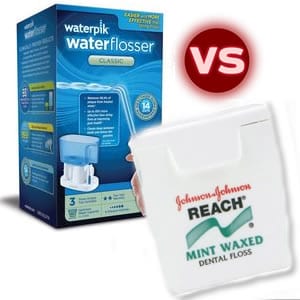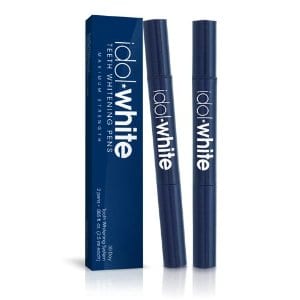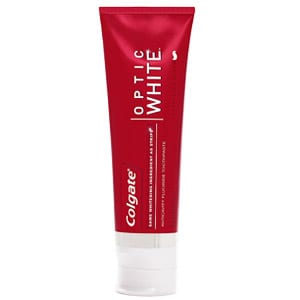 If you’re sizing up Waterpik vs. Flossing and wondering which one your dentist would recommend, which one is easier, and which one leaves your mouth feeling cleaner, you probably think the Waterpik would win hands down. But does the device really offer all of the benefits it claims it does, and can it beat out the old standby of flossing?
If you’re sizing up Waterpik vs. Flossing and wondering which one your dentist would recommend, which one is easier, and which one leaves your mouth feeling cleaner, you probably think the Waterpik would win hands down. But does the device really offer all of the benefits it claims it does, and can it beat out the old standby of flossing?
The Tale of the Tape
Cleaning between your teeth is not the easiest thing to do, but dentists all over the world continually urge their patients to floss more. They can tell right away during a dental visit if you’ve been keeping up with your flossing duties, so it just goes to show that you really are accomplishing something by using floss. People have been using floss for several generations, and it is effective, but just like most conventional methods, there will always be a new and better way to do things.
Waterpik Recap
The Waterpik system is designed to make traditional flossing a thing of the past. They cite many clinical studies that show it’s more effective than flossing and can even help prevent things like gingivitis better. Those that have trouble with their gums are often told to start using a water flossing system, and Waterpik is pretty much the default recommendation. See our full review of Waterpik Ultra Water Flosser, one of the products in their line-up.
Flossing Weigh In
Most people hate to floss, and it’s considered one of the hardest habits to start up. It’s one of those tasks that’s hard to add to your daily routine, and easy to fall behind on, since it doesn’t provide much immediate benefit, unless you’ve got something in your teeth you want to get out. They’ve tried to make upgrades to it over the years, adding mint flavoring, making it silkier so it can fit between tight teeth, and putting it on a stick so it’s easy to use, but it’s still considered one of those chores that not many look forward to it.
Cost Comparison
Flossing has a very low cost, with a pack of floss costing $3 or less. The Waterpik represents a larger upfront cost, but can then be used again and again with very little upkeep costs involved.
Where They’re Similar
Both methods provide the same benefit: getting to places your toothbrush can’t go. It’s just as important to clean between your teeth as it is to brush your teeth daily with your toothbrush. They say that if for whatever reason you can’t brush your teeth, you should still floss them because it’s just that good for them.
Where They’re Different
Flossing is pretty straightforward, it’s basically a piece of string that goes between your teeth, cleaning out any food particles that managed to get stuck in there, and scraping up against your teeth to clean them. Waterpik uses a fine stream of water and shoots it between your teeth.
Final Waterpik vs. Flossing Match-Up
Flossing is a good backup to using a Waterpik because it’s portable and is something you can take with you when you’re on the go. But aside from that it doesn’t really match up too well against the Waterpik system. Waterpik has been around for several decades, and they’re always researching and coming up with new features and enhancements on an already effective system. It’s companies like this that you want to purchase from since they’re showing that they’re serious about providing a quality product.
You have to consider other factors as well as whether or not it does a better job. There’s also ease of use, which the Waterpik excels. It’s basically just point and shoot instead of trying to bend your wrists and open your mouth as wide as you can to floss. Like the makers of the Reach toothbrush say, it’d be nice if you had a flip-top head, but since you don’t you need something that can get to the hard to reach places without a lot of effort on your part. This makes it easier to make using the Waterpik a habit, rather than a chore.
If you’ve never used a Waterpik before, then you don’t know how to compare the two experiences. But the difference in the feeling of your mouth after using a Waterpik compared to using floss makes it easy to see that the Waterpik wins. Your mouth and teeth just feel cleaner when you’re done with the Waterpik. It provides that instant gratification that makes it easier to stick with. It can almost be downright fun to use.
And the Winner Is…
Waterpik gets the victory here. Whether or not you agree with the makers of Waterpik on how much better it is than flossing, it’s pretty clear that it’s able to do a more effective job more quickly. If it also provides the side benefit of reducing the chance of getting gingivitis, so much the better. But if you’re serious about your oral health, or if your dentist has said that you need to step up your efforts, then you should invest in Waterpik system and use dental floss while traveling.



Turn it on after you put it in your mouth, instead of before.
Also, in my experience, when flossing, I would have 1 cavity every year or two. After I switched to the WP I’ve been cavity free for a decade. One item missing from all these considerations is that if you’re not an excellent flosser with perfect technique (think of your Dentist) then the WP will win ever time. There is no technique here, it’s just point and click. Flossing requires know-how and patience.
The title of the article is “Which Works Better”, not which is cheaper or more convenient or whatever. It needs professional, technical analysis to determine that. This page is lacking that.
I have been researching this topic and this is the only article that says WP is a substitute for flossing. The ones written by dentists say it’s an adjunct to floss, and it’s less effective, but good for some things. It says you can use it alone if you simply can’t floss.
I like the fact that waterpik cleans very thoroughly, but I’ve tried it before and it’s not as easy to use as the makers might lead you believe. In fact, flossing is much easier once you learn how to do it and get used to the shapes of your teeth. Also, like Belinda says it can get quite messy and those are the downsides of it. With that said though, you can never get your teeth and gum as clean with floss when compared to waterpik, so in the end waterpik is probably the superior choice.
I find the WaterPik sloppy to use – no matter how careful I am, I get water all over the counter. Is that an unavoidable problem, or will practice eliminate it?